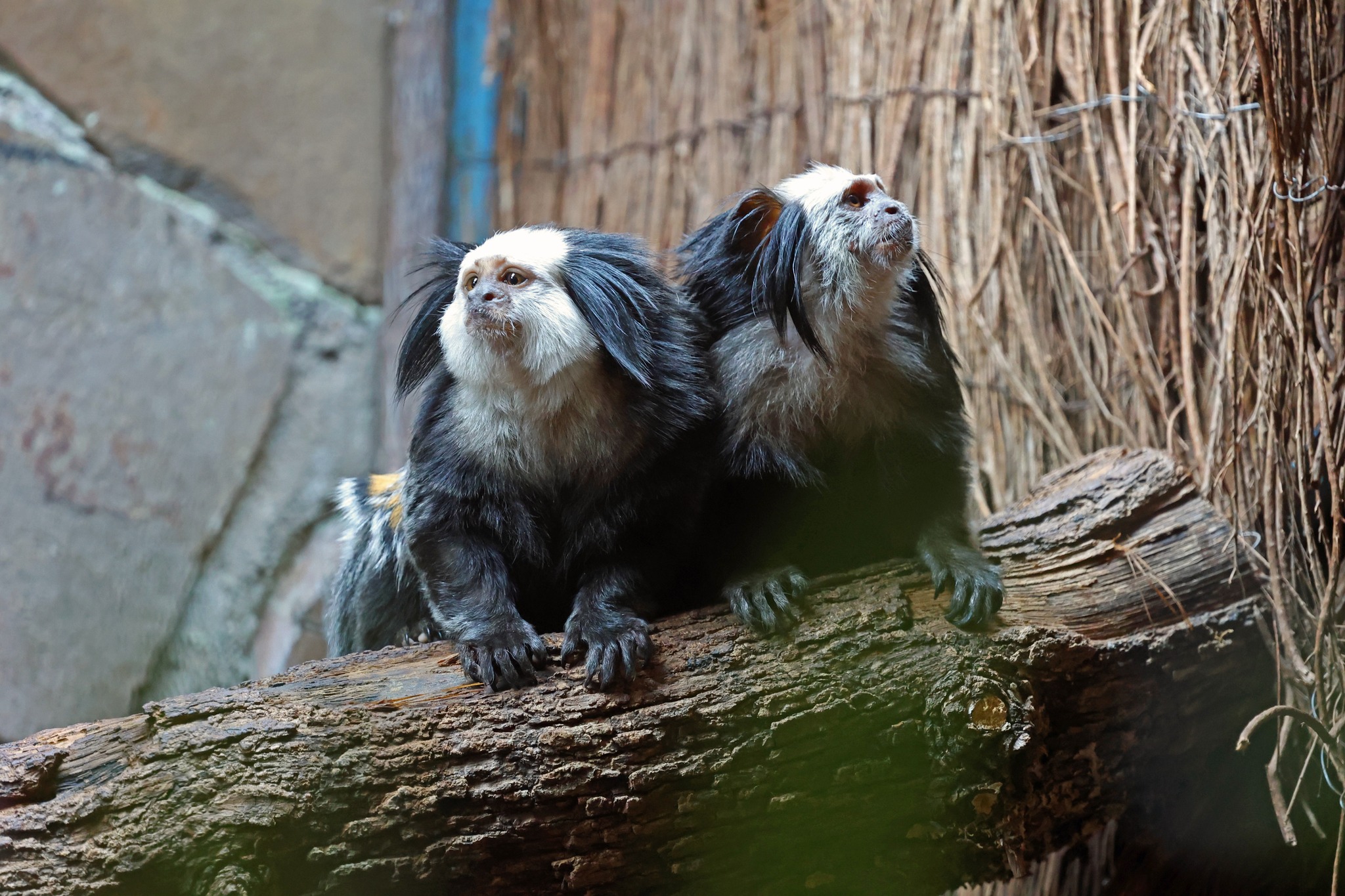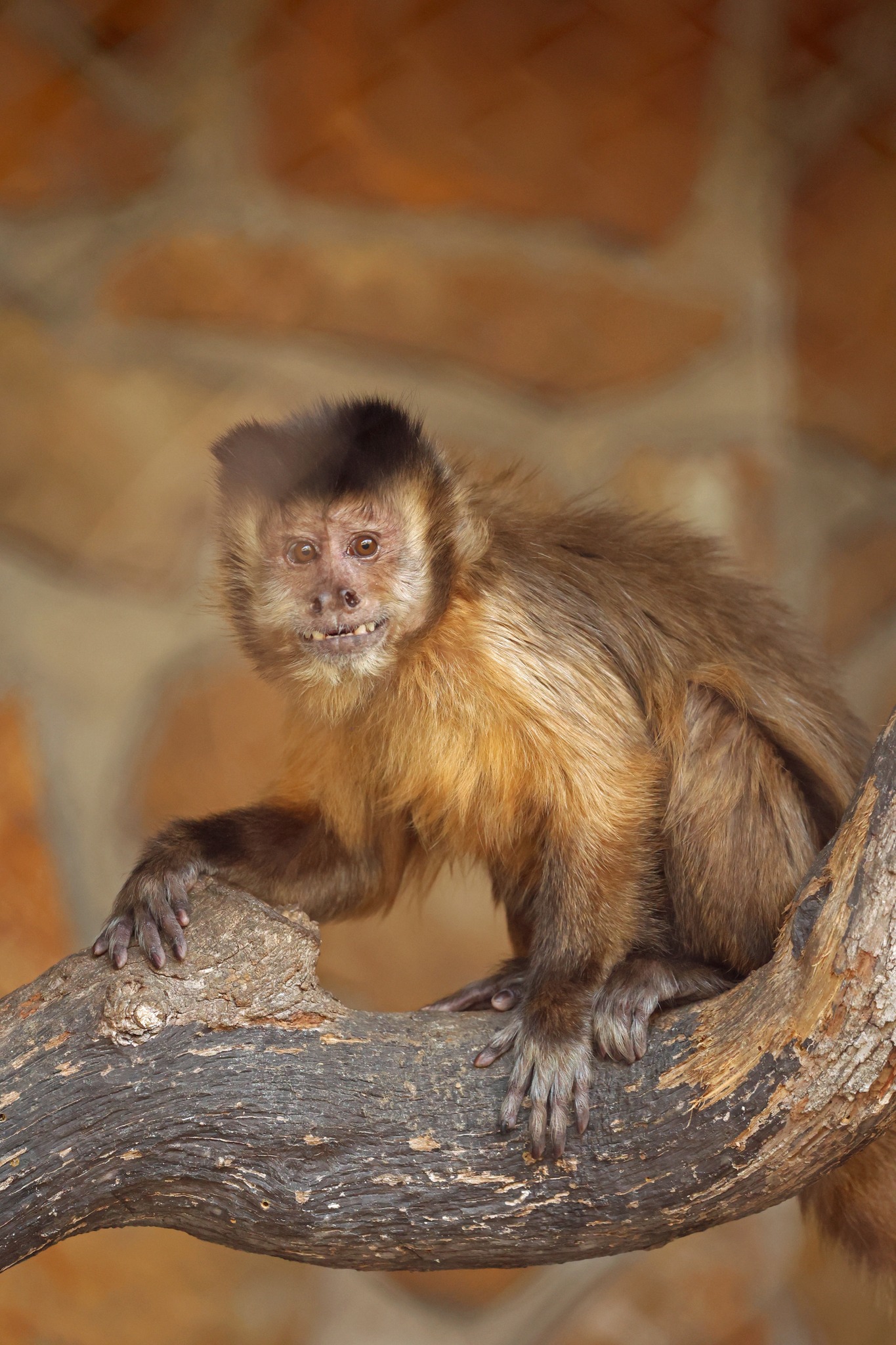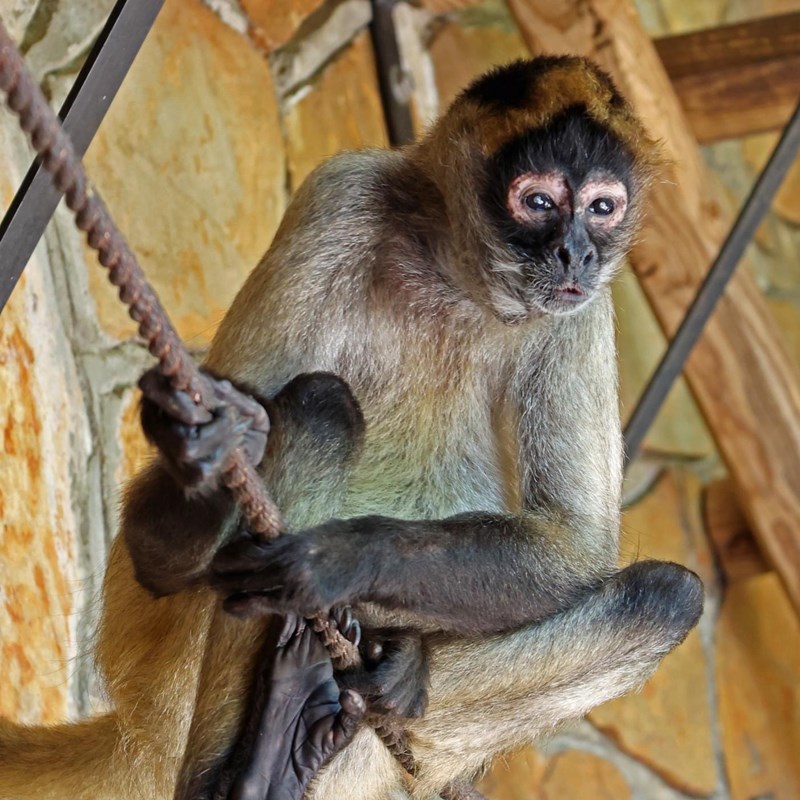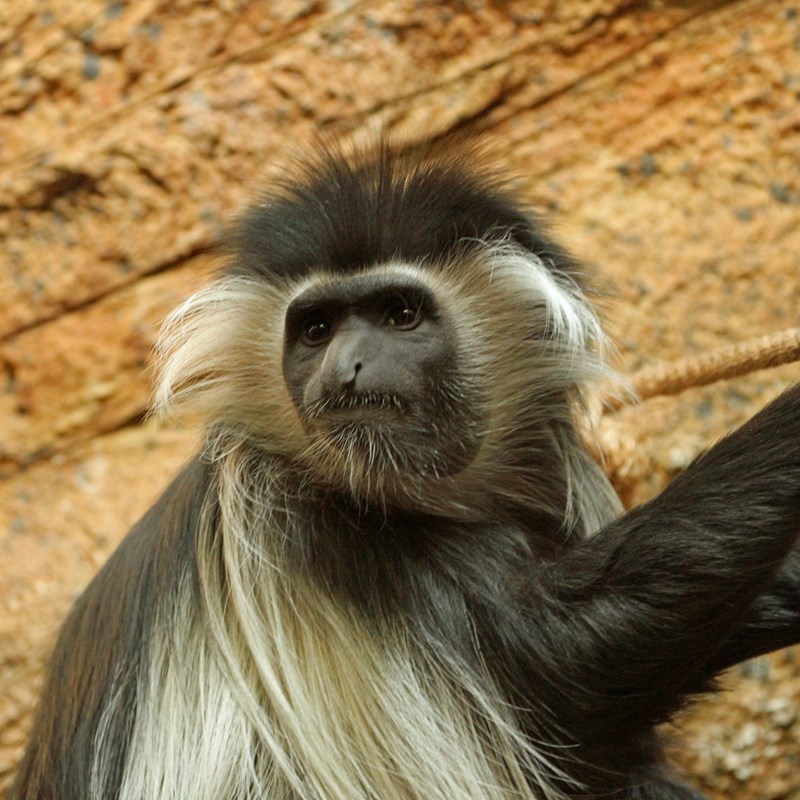Monkeys
Monkeys are a diverse group of primates found in tropical and subtropical regions around the world. From the agile and playful Spider Monkeys to the striking colors of the Colobus Monkey , these intelligent creatures exhibit a wide range of behaviors and adaptations. Monkeys are known for their dexterous hands and feet, which they use for grasping, climbing, and manipulating objects. They live in social groups called troops, where they engage in complex social interactions and hierarchies.




ENDANGERED
Black-Handed Spider Monkey
Native to Central and South America, Black-Handed Spider Monkeys are known for their agile movements and remarkable acrobatic abilities. These monkeys have long, slender limbs and prehensile tails that they use for swinging gracefully through the forest canopy. With their distinctive black hands and faces, they are easily recognizable among other monkey species. Black-Handed Spider Monkeys primarily feed on fruits, leaves, and insects, contributing to the dispersal of seeds and promoting forest regeneration.
Range/Habitat:
Black-handed spider monkeys are found along both coasts of central Mexico south to northwestern Columbia. They inhabit rainforests, montane forests, semi-deciduous forests, and mangrove swamp forests.
Size:
Body length: 1-2 feet, Tail length: 2-2.75 feet. Weight: 16lbs
- Spider monkeys get their name from their spider-like appearance when they hang by their tails from the bow of a tree. The tail even lacks hair on the underside so that the monkey can get a better grip on a branch while using both hands to gather fruit.
- Spider monkeys don’t have thumbs on their hands.
- Spider monkey troops are matriarchal, meaning the females play a leadership role
- There are seven species of spider monkey, all of which are under threat of extinction.
Endangered. They are threatened by habitat loss, the pet trade, and they are hunted for food. Unfortunately, this species likes to travel in large group numbers and are rather noisy making them easy to find.
Conservation Actions:
A species survival plan has been put into place to help insure the survival of the species. Zoos are working together in this endeavor.
Tufted Capuchin
Native to South America, Tufted Capuchins are known for their distinctive appearance, featuring a tuft of hair on their heads and a prehensile tail that they use for grasping and balancing. These intelligent monkeys are highly adaptable and can be found in a variety of habitats, including tropical forests, savannas, and mangrove swamps. Tufted Capuchins are omnivores, feeding on a diet of fruits, nuts, seeds, insects, and small vertebrates. They live in social groups called troops, where they engage in complex social interactions and hierarchies.
Habitat/Range:
They are found east of the Andes from Columbia to northern Argentina. They prefer moist subtropical and tropical forests, however, they have been found in dry, gallery, disturbed and secondary forests.
Size:
Weight: 3-11 lbs.
- Tufted Capuchins communicate with different facial expressions that represent many things from greetings and friendliness to threats and fear.
- They are considered the most intelligent of new world monkeys and tool use is common when foraging for food. They will use rocks to break open hard-shelled items.
Least Concern. Due to their reproductive style and adaptability with habitats their numbers have not decreased. However, White faced Capuchins are in danger due to the pet trade. Brown Capuchins are also hunted for their meat and are being captured as part of the pet trade. These are the monkeys most commonly known for being “organ grinders”.
Conservation Action:
Listed on CITES Appendix II. This species lives in many protected areas.
White-Fronted Marmoset
(Geoffroy’s Marmoset)
Native to Brazil and other parts of South America, White-Fronted Marmosets are known for their small size, distinctive white facial markings, and long tails. These arboreal creatures spend much of their time in the treetops of tropical forests, where they forage for insects, fruits, flowers, and small vertebrates. White-Fronted Marmosets are highly social animals, living in family groups led by a dominant breeding pair. They communicate through a variety of vocalizations and gestures, allowing them to coordinate their activities and maintain social bonds.
Habitat/Range:
White-Fronted Marmosets live in southeastern Brazil and prefer secondary lowlands, sub-montane forests, evergreen and semi-deciduous forests, forest edges, or dry forest patches.
Size:
Weight: 7-12oz.
Adult White-Fronted Marmosets have a white face and throat. Juveniles do not have those white markings until they are about five months old.
Least Concern. However, habitat destruction is causing their numbers to drop. This species has also been captured for the pet trade industry. Due to deforestation, only about 1 to 5% of their former habitat remains.
Conservation Actions:
They inhabit several protected areas and their populations are not declining at an alarming rate.
White-Faced Saki
They exhibit sexual dimorphism with males being larger than females and also having black fur with a white face. Females have brownish gray fur with two lines on their face; females also have orange colored fur on their chest and abdomen. Both male and females have the same coloration but this changes when they reach four years of age. Their tails are not prehensile but they use them for balance as they jump from tree to tree.
Habitat/Range:
They are found in Brazil, some parts of Venezuela, and parts of French Guiana, Guyana, and Suriname. Arboreal creatures, the white-faced saki lives in upland and lowland forests. They prefer areas abundant in fruit and with plenty of watering holes.
Size:
Weight: 4lbs.
Saki monkeys have sturdy canine teeth and can easily crack open the hard shells of nuts and seeds, including Brazil nuts.
Least Concern. The pet trade as well as being hunted for meat is a cause for concern for these monkeys. They do not reproduce quickly enough to replace those killed or captured.
Conservation Action:
Listed under CITES Appendix II.
Colobus Monkey
Native to various parts of Africa, Colobus Monkeys are known for their striking black and white fur patterns, long tails, and specialized stomachs for digesting leaves. These arboreal primates spend the majority of their time in the forest canopy, where they primarily feed on leaves, supplemented with fruits, seeds, and occasionally insects. Colobus Monkeys live in social groups called troops, consisting of multiple males, females, and their offspring. They communicate using a variety of vocalizations, including hoots, screams, and grunts.
Habitat/Range:
Colobus monkeys inhabit a variety of forested habitats throughout sub-Saharan Africa, including tropical rainforests, montane forests, and gallery forests. They are found in countries such as Kenya, Uganda, Tanzania, Democratic Republic of the Congo, Rwanda, and others.
Size:
Male: Head and body length: 675 mm (26.6 in.); Tail length: 667 mm (26.3 in.)
Female: Head and body length: 615 mm (24.2 in.); Tail length: 687 mm (27.0 in.)
Weight Male: 13.5 kg (29.8 lbs.)
Female: 7.9 to 9.2 kg (17.4 to 20.3 lbs.)
- Colobus monkeys are primarily folivorous, meaning they mainly eat leaves. Their specialized stomachs help them digest tough plant material, allowing them to thrive on a diet that other primates might find challenging.
- Unlike many other primates, Colobus monkeys are relatively quiet. They communicate through a series of soft calls, hoots, and occasional grunts rather than the loud vocalizations seen in other species.
- Colobus monkeys have cultural significance in some African societies, where they are sometimes regarded as sacred or taboo. They feature in local folklore and traditional ceremonies, highlighting the deep connection between humans and nature in these regions.
- Baby colobus are born completely white.
This species is listed by IUCN Redlist as least concern. This species is locally threatened in parts of it’s range. Major threats include habitat loss and hunting.
Photos by Karen Caster



